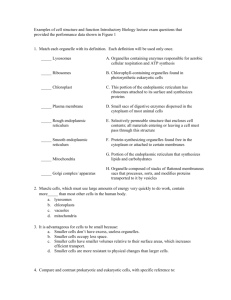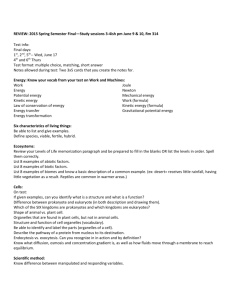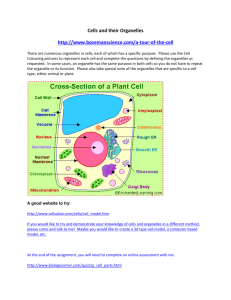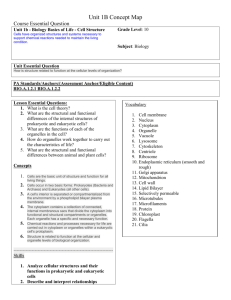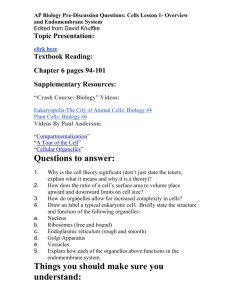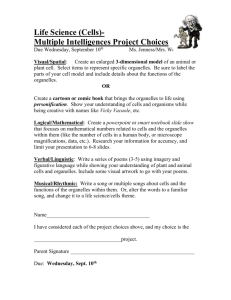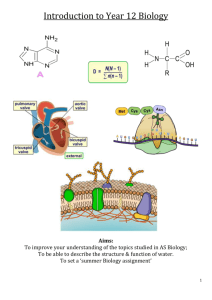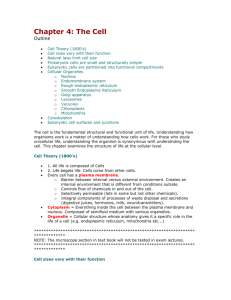A Level Biology Induction Task During your studies of Biology at
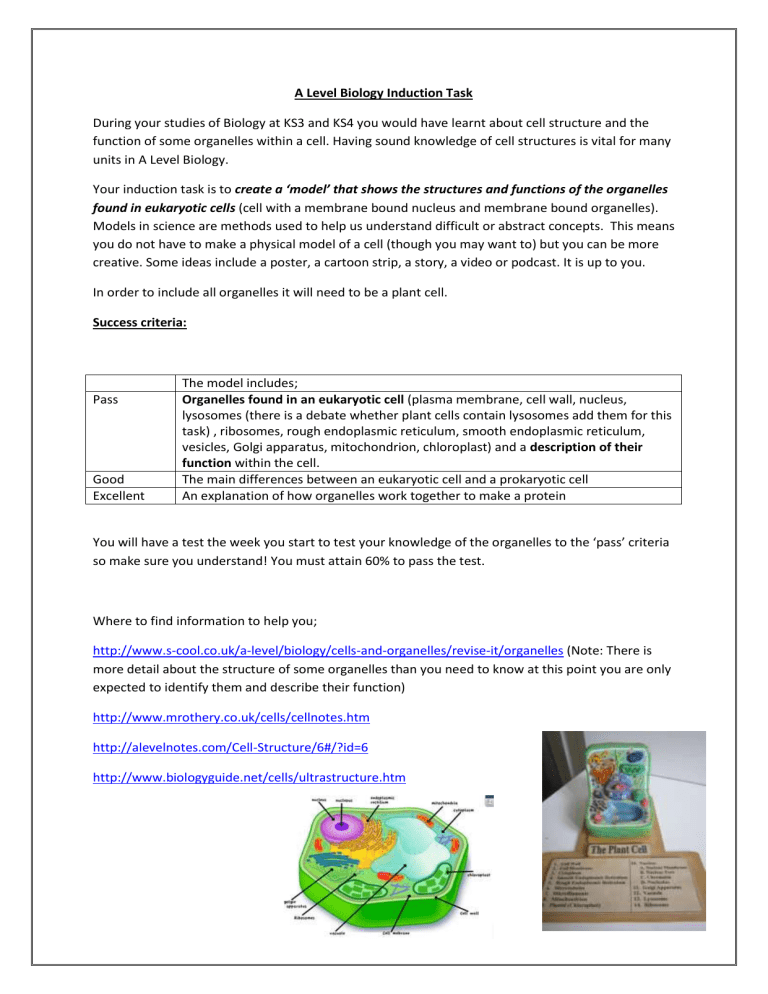
A Level Biology Induction Task
During your studies of Biology at KS3 and KS4 you would have learnt about cell structure and the function of some organelles within a cell. Having sound knowledge of cell structures is vital for many units in A Level Biology.
Your induction task is to create a ‘model’ that shows the structures and functions of the organelles
found in eukaryotic cells (cell with a membrane bound nucleus and membrane bound organelles).
Models in science are methods used to help us understand difficult or abstract concepts. This means you do not have to make a physical model of a cell (though you may want to) but you can be more creative. Some ideas include a poster, a cartoon strip, a story, a video or podcast. It is up to you.
In order to include all organelles it will need to be a plant cell.
Success criteria:
Pass
Good
Excellent
The model includes;
Organelles found in an eukaryotic cell (plasma membrane, cell wall, nucleus, lysosomes (there is a debate whether plant cells contain lysosomes add them for this task) , ribosomes, rough endoplasmic reticulum, smooth endoplasmic reticulum, vesicles, Golgi apparatus, mitochondrion, chloroplast) and a description of their
function within the cell.
The main differences between an eukaryotic cell and a prokaryotic cell
An explanation of how organelles work together to make a protein
You will have a test the week you start to test your knowledge of the organelles to the ‘pass’ criteria so make sure you understand! You must attain 60% to pass the test.
Where to find information to help you; http://www.s-cool.co.uk/a-level/biology/cells-and-organelles/revise-it/organelles (Note: There is more detail about the structure of some organelles than you need to know at this point you are only expected to identify them and describe their function) http://www.mrothery.co.uk/cells/cellnotes.htm
http://alevelnotes.com/Cell-Structure/6#/?id=6 http://www.biologyguide.net/cells/ultrastructure.htm

